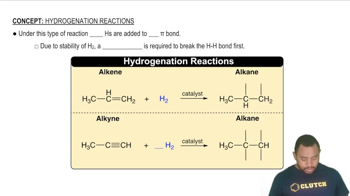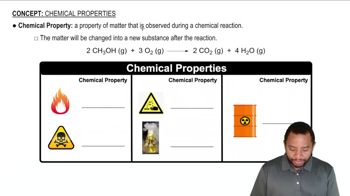Give the name or chemical formula, as appropriate, for each of the following binary molecular substances: (f) tetraphosphorus hexasulfide.

Assume that you encounter the following sentences in your reading. What is the chemical formula for each substance mentioned? (c) Hydrogen cyanide is a very poisonous gas.
 Verified step by step guidance
Verified step by step guidance
Verified video answer for a similar problem:
Key Concepts
Chemical Formula

Hydrogen Cyanide

Toxicity of Chemicals

Write the chemical formula for each substance mentioned in the following word descriptions (use the front inside cover to find the symbols for the elements you do not know). (b) On treatment with hydrofluoric acid, silicon dioxide forms silicon tetrafluoride and water. (use the front inside cover to find the symbols for the elements you do not know). (c) Sulfur dioxide reacts with water to form sulfurous acid. (use the front inside cover to find the symbols for the elements you do not know). (d) The substance phosphorus trihydride, commonly called phosphine, is a toxic gas. (e) Perchloric acid reacts with cadmium to form cadmium(II) perchlorate.
(a) What is a hydrocarbon?
(b) Pentane is the alkane with a chain of five carbon atoms. Determine its empirical formula.
(b) Pentane is the alkane with a chain of five carbon atoms. Determine its molecular formula.
